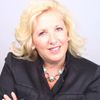As America's students settle into a new school year, they'll also be returning to their social studies classes -- courses ostensibly about teaching students about history and how it applies to civic life. But when it comes to lesbian, gay, bisexual and transgender (LGBT) contributions to our history, these stories are often not only missing but mocked.
Imagine being Bryan Blaise, a student of Florida social studies teacher Jerry Buell, who advocated allowing gays to serve in the military -- so that they could be the only ones on the front lines of battle. What was Buell teaching his class about gay people? One imagines it was nothing positive; this is the same man who responded to New York's legalization of same-sex marriage by posting on his Facebook wall that the vote almost made him throw up and by calling same-sex marriage a "cesspool."
There are many remarkable stories that Buell is likely still not teaching, like that of the daughter of migrant workers, Lupe Valdez, a Latina, lesbian Democrat who was elected Sheriff of Dallas County, Tex. Or Atlanta's Alex Wan, who'd endured bullying for being Asian, a geek and gay, and who became the first openly gay Asian American elected in the Deep South.
Why do these omissions matter? First of all, excluding one group makes for incomplete, and therefore inaccurate, history. That should be reason enough. But since it isn't, California passed a law that ensures that contributions by LGBT people are included -- a law that simply joins the existing ones that already ensure that their schools teach about more than white, heterosexual men.
In Georgia, that law was mocked by Dick Yarbrough, a columnist known for his anti-gay tirades, who wrote, "We have a lot of pride in Georgia's history and the last thing we need to know is that some guy we named a county for used to run around at night in hoop skirts ... I don't think our kids could handle that kind of stuff."
What Yarbrough missed is that it is often LGBT youth who struggle most to "handle" their experience in school. Growing up, we look around us to get clues as to what's possible. We look to our parents, teachers and leaders for people whose backgrounds resemble our own. If we find none, or, worse yet, find that "people like us" are demeaned and despised, what does that tell us about who we might become?
That's why it's critical to use LGBT history to show what is possible. In Breaking Through, a documentary I am directing in which openly LGBT elected officials, including Valdez and Wan, share their stories of self-doubt and eventual triumph, Congresswoman Tammy Baldwin tells of a young man who confided that her story saved him from suicide: "You," he said, "helped me realize that I can do anything!"
I know personally how badly LGBT people need role models. One very warm Birmingham spring day years ago, I sat in the car outside my college dorm, listening to tennis star Billie Jean King acknowledge that she was a lesbian. I was transfixed as the story unfolded, unsure as to whether she was a role model or a warning. Realizing that she was only out because she had been outed reinforced my sense that being open was a huge danger to one's personal and professional life.
Before King, I only knew of two people who were LGBT: my uncle -- who slowly died of drugs, alcohol and loneliness -- and the transgender Renée Richards, who'd been described by one of my basketball teammates as a "freak." It would be another 12 years until I came out. My parents responded, "We don't want you to have a sad life like your uncle."
They weren't being mean: that's all we'd known of gay people.
Even today, there are folks who don't know any better: parents who are afraid for their children, and LGBT kids and even adults who feel they must live their lives in shame and silence.
Yes, enormous strides have been made, culturally, legally and politically. Yet to the young people in rural areas and middle-aged folks trying to keep a job or climb a corporate ladder, Kurt and Blaine's Glee romance is only a Hollywood fantasy.
As LGBT people of all ages return to school and to work, many feel trepidation about their futures. Will they essentially be bullied by their bosses and teachers into staying in the closet? Or will they be shown role models and heroes whose lives offer them hope for their own future?
It shouldn't take a law like the one in California to make it happen, but that -- and the stories told in Breaking Through -- are a good start. "Our kids" not only can "handle" having LGBT role models -- they need them.
